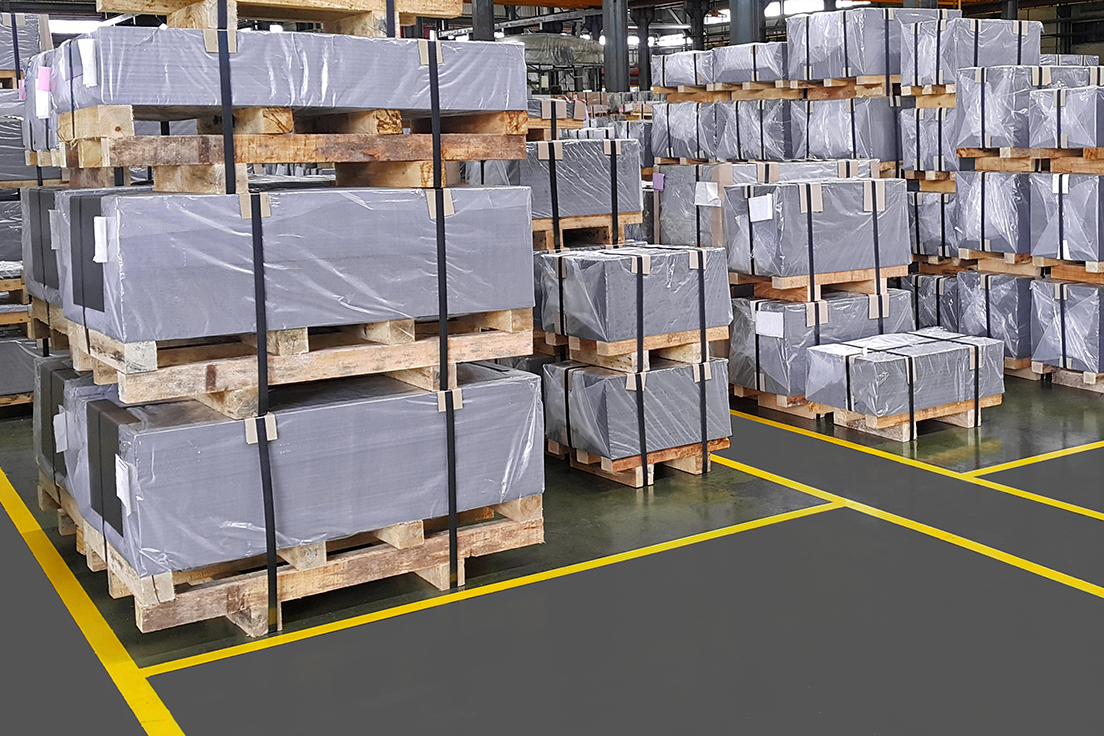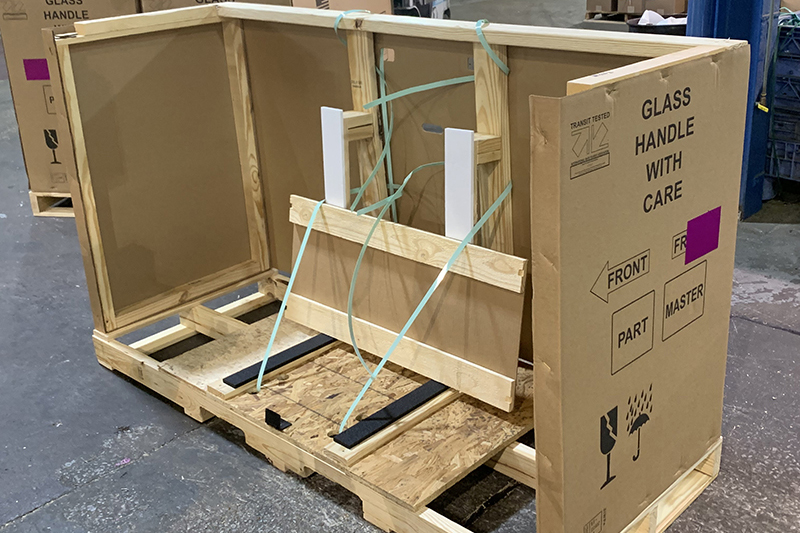Effective Industrial Recycling Solutions for Lasting Packaging: A Comprehensive Guide
That's where this extensive guide on efficient commercial recycling solutions for sustainable packaging comes in. By discovering crucial areas such as product packaging material option, designing for recyclability, carrying out reusing infrastructure, teaming up with recycling partners, and monitoring and measuring recycling success, this guide will certainly outfit you with the expertise and tools essential to make educated choices and drive positive adjustment within your organization. Whether you're a product packaging expert, sustainability supervisor, or merely interested in the subject, this overview will provide valuable understandings and approaches to aid you navigate the world of sustainable packaging.
Product Packaging Material Selection
The choice of packaging materials plays a vital function in guaranteeing the sustainability of industrial reusing services. When it comes to sustainable packaging, the option of materials is type in minimizing environmental impact and taking full advantage of reusing effectiveness. Picking the ideal products can help minimize waste generation, save resources, and advertise a round economic situation.
One crucial aspect to think about in packaging product option is recyclability - industrial metal packaging. Products that can be easily recycled and integrated back right into the manufacturing cycle are chosen. As an example, products like cardboard, paper, glass, and specific kinds of plastics can be reused multiple times without losing their quality. On the other hand, products that are difficult to reuse, such as blended plastics or non-recyclable composites, can create challenges for the reusing procedure and might end up in burners or land fills.
Another factor to consider is the use of biodegradable and renewable materials. Packaging made from sustainable resources, such as plant-based plastics or biopolymers, can aid minimize dependency on nonrenewable fuel sources and alleviate environment modification. Furthermore, biodegradable products damage down normally with time, minimizing the buildup of waste in garbage dumps.
Moreover, the weight and quantity of packaging materials must be minimized to reduce transport costs and energy usage. Light-weight products not only require less resources during production however additionally contribute to reduce carbon exhausts throughout transport.
Designing for Recyclability
In order to make sure the recyclability of product packaging materials, thoughtful layout is necessary. Designing for recyclability involves developing packaging that can be easily sorted, divided, and refined in reusing facilities. One crucial element of designing for recyclability is the option of materials. Packaging designers must prioritize using products that are commonly accepted for reusing and have actually developed recycling infrastructures. Materials such as glass, aluminum, and particular sorts of plastic, like animal and HDPE, are frequently recycled and must be preferred over materials that are pricey or difficult to reuse.
Another essential factor to consider in designing for recyclability is the elimination of unneeded parts or products. By minimizing the variety of layers, coverings, and added components, product packaging can be made easier and simpler to recycle. Furthermore, developers ought to intend to decrease making use of combined materials, as they can make complex the recycling process.

Implementing Recycling Infrastructure
Reliable implementation of reusing infrastructure is vital for the success of commercial reusing solutions. Without proper infrastructure in area, the reusing procedure comes to be ineffective and inefficient, preventing the total goal of sustainable product packaging.
To carry out reusing infrastructure successfully, several essential variables require to be thought about. To start with, there ought to be a well-organized collection system that promotes the splitting up and collection of recyclable products. This can include assigned recycling bins in public areas, along with partnerships with waste monitoring companies for curbside pickup and sorting.
Once collected, the recyclable materials require to be transported to recycling facilities in a timely way. This calls for reliable logistics and transport networks, making certain that the products get to the ideal centers moved here immediately.
At the reusing centers, progressed sorting and handling modern technologies need to remain in place to separate different sorts of materials efficiently. This includes the usage of automated arranging equipments, optical scanners, and manual sorting techniques.
Moreover, there should be a durable market demand for recycled products. This can be achieved through partnerships with manufacturers and sectors that make use of recycled products in their production processes. Developing a steady market for recycled products incentivizes the recycling sector and advertises the round economic situation.
Working Together With Recycling Allies

One key element of teaming up with recycling partners is the establishment of clear communication networks. It is essential to establish open lines of communication to help with the exchange of information, updates, and feedback. This enables both parties to stay notified regarding the progression of recycling campaigns and attend to any type of obstacles or issues that may arise.
In addition, collaboration can include joint efforts in executing and creating recycling programs. Reusing companions can offer important understandings and assistance in establishing effective collection systems and determining the most appropriate recycling innovations. By interacting, organizations and recycling partners can enhance the reusing process and reduce waste.
Furthermore, cooperation can expand beyond the operational elements of reusing. It can also include advocacy and education and learning efforts. By joining forces, services and recycling partners can elevate awareness about the value of reusing and advertise the fostering of sustainable packaging methods among customers and other stakeholders.
Monitoring and Measuring Recycling Success
To make certain the performance of commercial reusing remedies and the achievement of lasting packaging goals, it is important for services and their recycling companions to develop an extensive system for tracking and determining reusing success (bulk container recycling). Tracking and measuring recycling success enables organizations to evaluate the impact of their recycling initiatives, identify areas for improvement, and click for more info set significant targets for future progression
One means to track recycling success is through the usage of information collection and analysis tools. By gathering data on the amount of packaging waste generated, the portion of waste that is reused, and the kinds of materials being reused, companies can acquire beneficial understandings right into their recycling performance. This data can then be assessed to recognize trends, patterns, and locations of ineffectiveness.
An additional vital facet of monitoring and determining reusing success is developing clear and standard metrics. This enables services to contrast their performance against industry standards and track their development over time. Metrics such as reusing rates, waste diversion prices, description and greenhouse gas discharges can give a measurable procedure of an organization's reusing success.

Final Thought
To conclude, applying effective commercial recycling services for lasting packaging calls for cautious factor to consider of product packaging product choice, creating for recyclability, executing reusing infrastructure, working together with reusing partners, and monitoring and determining recycling success. By integrating these techniques, businesses can add to an extra sustainable and environmentally-friendly method to product packaging, minimizing waste and advertising the round economy.
By checking out key areas such as packaging material choice, creating for recyclability, implementing recycling facilities, collaborating with reusing partners, and tracking and measuring reusing success, this guide will furnish you with the expertise and tools required to make educated decisions and drive favorable adjustment within your organization. Packaging designers ought to focus on the usage of materials that are commonly accepted for reusing and have actually developed recycling frameworks.Partnership with recycling partners is crucial for the successful execution of industrial recycling services and the success of lasting product packaging objectives. By signing up with pressures, services and reusing companions can raise awareness regarding the relevance of reusing and advertise the adoption of sustainable product packaging methods amongst consumers and various other stakeholders.
By gathering information on the quantity of product packaging waste produced, the percent of waste that is reused, and the kinds of materials being recycled, companies can acquire valuable understandings into their reusing efficiency.